Nestled in the Marche region of Italy, Recanati beckons travelers with its poetic charm and literary significance. I discovered this small town is more than just a dot on the map—it’s a place where poetry comes alive through cobblestone streets and panoramic vistas that inspired one of Italy’s greatest poets, Giacomo Leopardi.
Walking through Recanati feels like stepping into the pages of Leopardi’s works. Every corner and landscape directly influenced his profound poetry.

The connection between Leopardi and his birthplace is tangible as you explore the historic center. Though Leopardi longed to escape this small town, it remained his primary source of creative inspiration. I found myself pausing at the same viewpoints where the poet once stood, understanding how these rolling hills and medieval architecture shaped his artistic vision.
My journey through Leopardi’s Recanati revealed the beautiful contradiction of the poet’s relationship with his hometown—a place he both loved and yearned to leave. You can still breathe in the poetry while wandering the same streets he described in his famous works. The experience of connecting with a literary genius through physical space makes Recanati a unique destination for anyone who appreciates how places can transform into art.
Exploring Recanati: Leopardi’s Birthplace and Muse
Nestled in Italy’s Marche region, Recanati stands as both the birthplace and the complex muse for one of Italy’s greatest literary figures, Giacomo Leopardi. The town’s narrow streets and historic buildings tell a story that deeply shaped the poet’s melancholic yet brilliant works.
The Melancholic Beauty of Recanati
Walking through Recanati’s cobblestone streets, I feel the same contradictory emotions that must have filled Leopardi himself. The town is undeniably charming with its medieval architecture and sweeping views of the countryside.
Yet I understand why Leopardi described it as his “native wild village” – there’s a certain isolation here that both inspired and constrained him. The poet longed to escape Recanati even as its landscapes filled his verses with vivid imagery.
The gentle hills surrounding the town create a backdrop that shifts with the seasons, much like the emotional landscape of Leopardi’s poetry. His relationship with Recanati was complicated – he found its provincial nature stifling yet drew endless inspiration from its natural beauty.
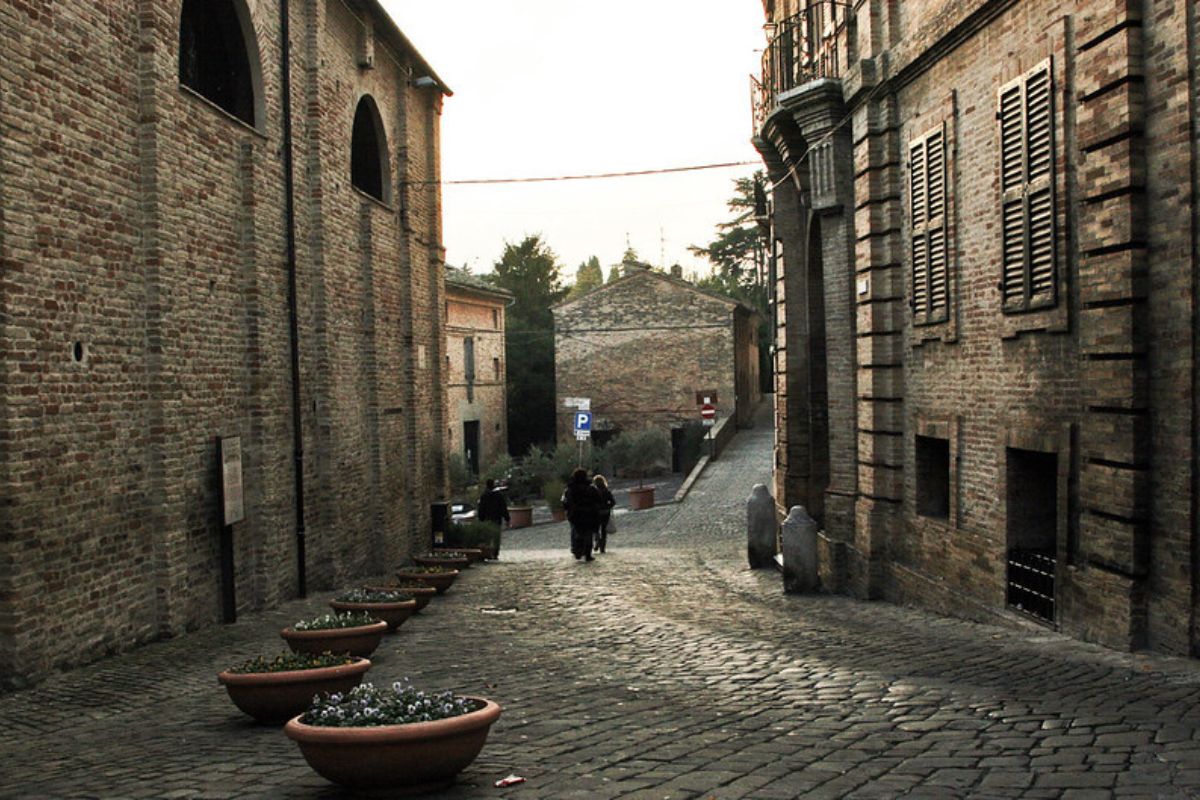
Image Source: Flickr
Landmarks and Landscapes: A Physical and Literary Journey
Casa Leopardi stands as the centerpiece of any literary pilgrimage to Recanati. This unassuming building where the poet was born and raised houses a remarkable library of 20,000 volumes that fueled his imagination and intellect.
The museum within eloquently narrates Leopardi’s life journey through personal artifacts and manuscripts. I recommend spending at least an hour here to truly appreciate the environment that shaped his worldview.
Beyond the house, I followed Leopardi’s footsteps to Colle dell’Infinito (Hill of Infinity) that inspired his famous poem “L’Infinito.” Standing at this spot overlooking the rolling countryside, I immediately understood how this vista sparked his contemplation of eternity.
The Piazza Sabato del Villaggio connects directly to another of his poems and offers a perfect spot to rest and reflect on how thoroughly Recanati’s physical spaces translate into his literary landscapes.
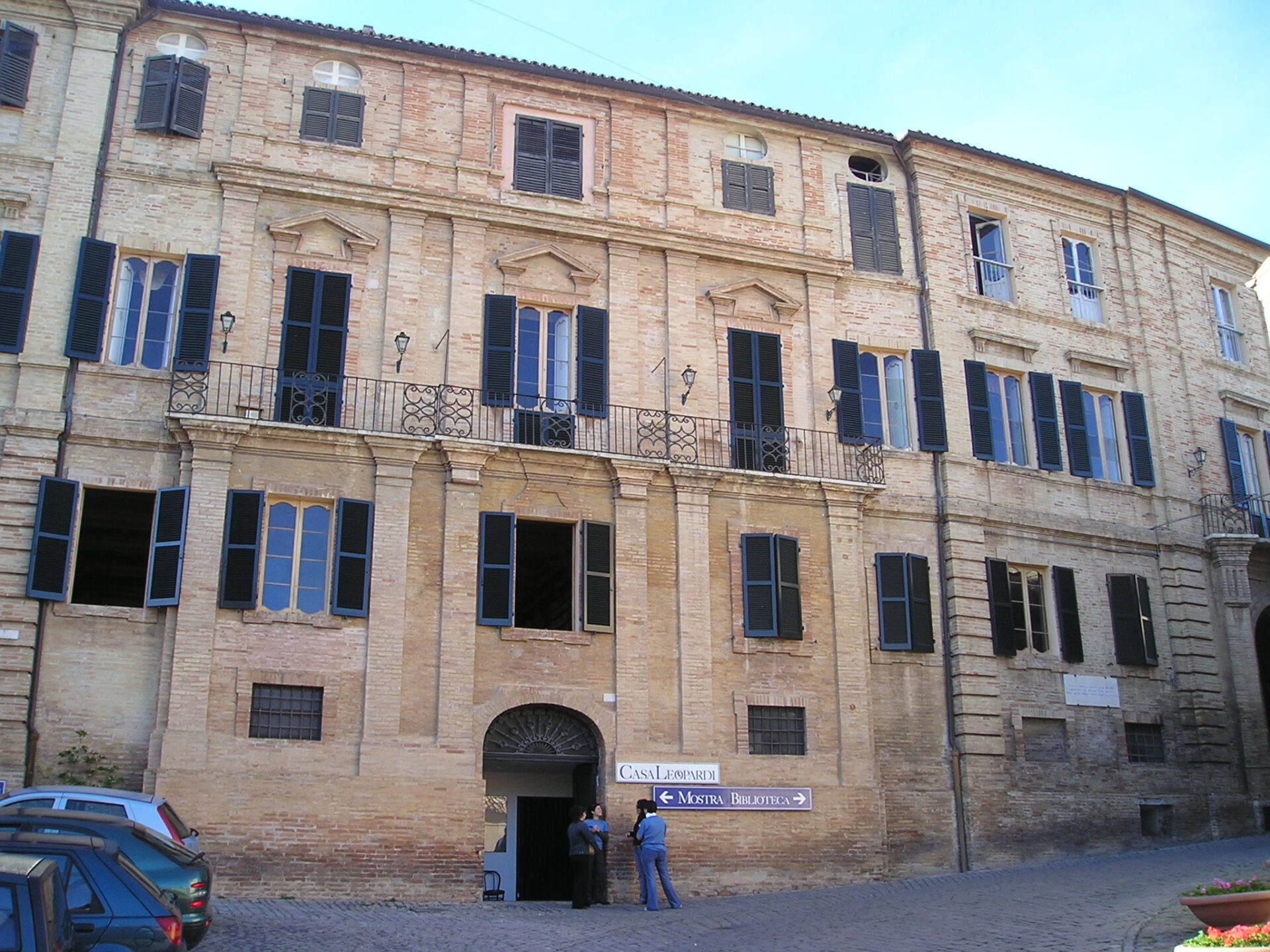
Image Source: Wikimedia Commons
Leopardi’s Life and Works: The Essence of a Poet
Giacomo Leopardi stands as one of Italy’s greatest literary figures, whose profound insights and remarkable talent emerged from his small-town origins in Recanati. His genius reshaped Italian poetry while his philosophical works continue to resonate with readers seeking to understand the human condition.
The Early Years of Giacomo Leopardi
Born in 1798 in the provincial town of Recanati, Giacomo Leopardi grew up in a strict household dominated by his father’s extensive library. I was amazed to learn how young Leopardi taught himself Greek, Latin, and several modern languages without formal schooling.
By age 16, he was already translating classical works and writing scholarly essays!
His childhood was marked by isolation and poor health, which would plague him throughout his life. The small town that inspired him also became a prison in his mind. Leopardi longed to escape Recanati’s confines, though the landscapes and experiences there shaped his earliest works.
His relationship with his family was complicated. His father was controlling, while his mother was religiously strict. These early experiences fostered the melancholy and pessimistic worldview that would later define his writing.
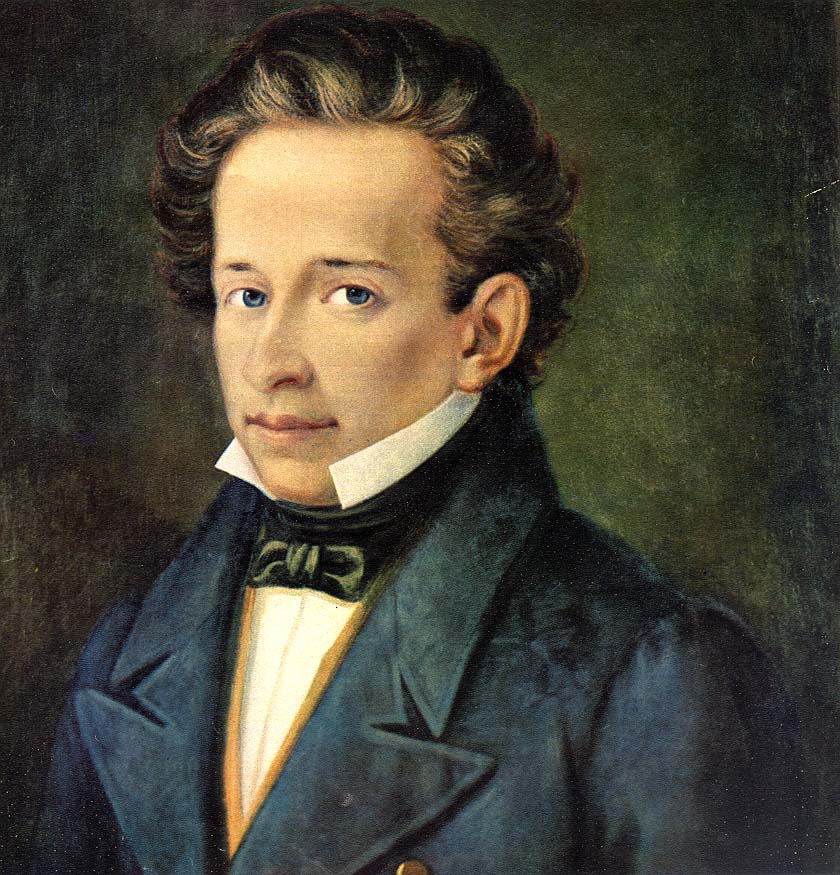
Literary Accomplishments and ‘Canti’
Leopardi’s masterpiece, Canti (Songs), represents the pinnacle of Italian Romantic poetry. When I first read these poems, I was struck by their emotional depth and revolutionary style. His works broke from tradition, introducing a new poetic voice in nineteenth-century Italy.
Some of his most famous poems include:
- “L’infinito” (The Infinite)
- “A Silvia” (To Silvia)
- “Il sabato del villaggio” (Saturday in the Village)
What makes Leopardi’s poetry special is how it blends personal experience with universal themes. He writes about love, nature, and memory while exploring deeper philosophical questions about human existence.
Despite poor health and financial struggles, Leopardi produced works of remarkable quality and insight. His poetry captures both the beauty of life and a deep awareness of suffering that feels timeless.
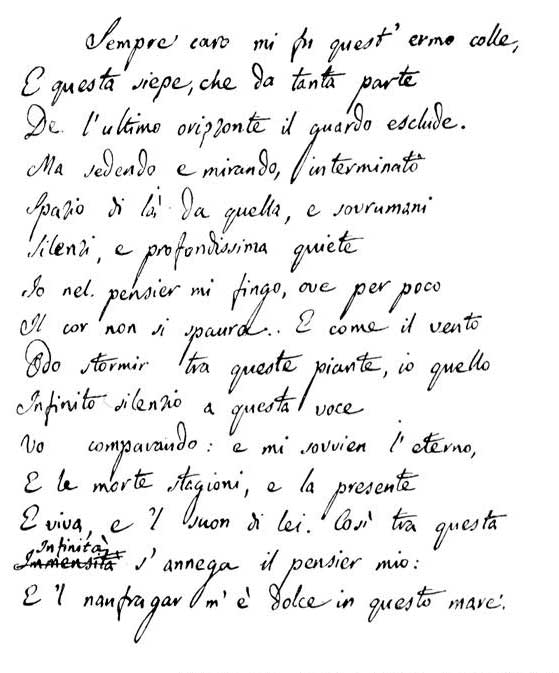
Philosophical Prose: The ‘Operette Morali’
The Operette Morali (Small Moral Works) showcases Leopardi’s brilliant philosophical mind. These dialogues and essays explore profound questions about happiness, progress, and the human condition with surprising humor and clarity.
I find his philosophical outlook fascinating—skeptical of the idea of progress and deeply aware of life’s struggles. Leopardi challenged the optimism of his era with a clear-eyed view of reality that some call pessimistic but others see as honest.
In works like “Dialogue between Nature and an Islander,” Leopardi questions whether nature cares about human happiness. His thinking influenced philosophers like Schopenhauer and Nietzsche, extending his impact beyond literature.
Despite his short life—he died at only 38 in 1837—Leopardi’s philosophical works remain surprisingly relevant today. They offer insights about modernity and technology that seem to anticipate our current struggles with meaning and purpose.

Synthesis of Natural Beauty and Poetic Expression
Leopardi’s relationship with nature shaped his poetic vision in profound ways. The landscapes of Recanati became both his muse and his metaphor, transforming ordinary hills and horizons into extraordinary explorations of human emotion.
Leopardi and the Depiction of Nature in Poetry
Walking through Recanati today, I’m struck by how the same natural elements that inspired Leopardi still captivate visitors. In “The Infinite,” one of his most famous poems, he describes sitting on a lonely hill with a hedge blocking his view, allowing his imagination to soar beyond physical limitations.
The forests surrounding his hometown weren’t just scenic backdrops. They became powerful symbols in his work, representing both shelter and isolation.
His poor health often confined him indoors, making his connection to nature more poignant. When I visit the window of his family palace where he spent hours gazing outward, I understand how limitation intensified his appreciation of natural beauty.
The Evolution of Leopardi’s Environmental Sensibility
Leopardi’s relationship with nature evolved throughout his life. In his early works, nature appears benevolent, offering escape from the constraints of his small-town existence and physical ailments.
Later, his view darkened considerably. Nature became indifferent or even hostile to human suffering, reflecting his growing melancholy and pessimism. This shift coincides with worsening health problems and personal disappointments.
The changing seasons of Marche influenced this evolution. I’ve noticed how the landscape transforms dramatically from vibrant springs to harsh winters, much like Leopardi’s shifting perspective.
His detailed observations of natural phenomena—from birdsong to star patterns—demonstrate remarkable attention to environmental details despite his limited mobility. These observations weren’t merely descriptive but deeply philosophical.
Leopardi’s Influence on Art and Culture Beyond Recanati
Giacomo Leopardi’s profound impact stretched far beyond the small town of his birth, shaping Italian culture and spreading to international artistic circles through his revolutionary poetic vision and philosophical depth.
Crossing the Borders: Leopardi’s Impact in Italy and Abroad
Walking through Florence’s literary haunts, I’m always struck by how deeply Leopardi’s influence permeated the city after his brief stay there. His works found a special home in Naples, where he spent his final years and formed important intellectual connections.
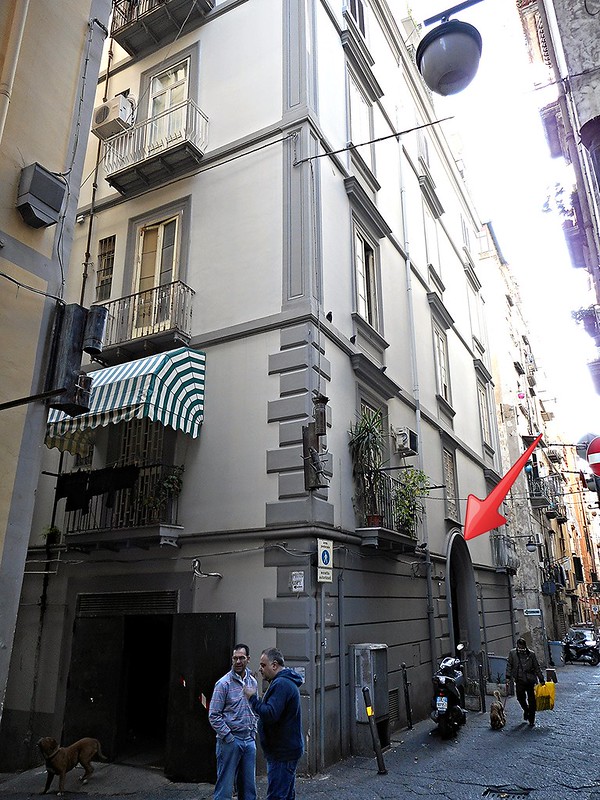
In Rome and Milan, prestigious publishing houses continue to release new editions of his poems and philosophical writings, keeping his legacy alive. I once attended a magnificent exhibition at the National Gallery that displayed artistic interpretations of “L’Infinito” spanning two centuries.
His pessimistic worldview resonated with philosophers and writers across Europe, particularly influencing Schopenhauer and Nietzsche. When traveling through Venice, I discovered how its melancholic beauty inspired readings of Leopardi’s works during annual festivals dedicated to his poetry.
Contemporary Interpretations of Leopardi’s Legacy
Modern Italian filmmakers have created several compelling biopics about Leopardi’s life, including Mario Martone’s “Il Giovane Favoloso” which I watched in a small theater in Renaissance-era Florence.
Musicians across Italy continue drawing inspiration from his poems, setting them to contemporary compositions. Last year, I attended a fascinating performance in Milan where electronic music accompanied readings of “Canti.”
His philosophical ideas about nature and human suffering remain surprisingly relevant in today’s environmental and social discourse. Digital projects have made his works accessible to new generations through apps and interactive websites.
Art installations throughout Italy’s cultural centers regularly reference his themes of cosmic indifference and human resilience. During my travels, I’ve photographed street art in Rome and Naples that reimagines his most famous verses with striking visual power.
Traveler’s Guide to Literary Recanati
Walking through Recanati feels like stepping into the pages of Giacomo Leopardi’s poetry. This charming Italian town is nestled in the Marche region and offers a perfect blend of literary history and breathtaking landscapes.
I recommend starting your journey at Casa Leopardi, the poet’s ancestral home. The impressive library contains over 20,000 volumes that shaped the young poet’s mind. The admission fee is €8. Guided tours run hourly.
Next, wander to Il Colle dell’Infinito (The Hill of Infinity), where Leopardi composed his famous poem “L’Infinito.” Standing here, I understood how the vast horizon inspired his reflections on solitude and eternity.
Must-Visit Literary Sites:
- Piazza Sabato del Villaggio
- The National Center of Leopardian Studies
- Torre del Borgo (Medieval Tower)
- Santa Maria di Montemorello Church
The town is compact enough to explore on foot in a day, but I suggest staying overnight to experience the contemplative evening atmosphere that influenced Leopardi’s creative process.

Image Source: Tripadvisor
Spring and fall offer the most pleasant temperatures for exploring the countryside that so captivated the poet. The rolling hills and distant mountains create a peaceful backdrop for literary reflection.
Local restaurants serve traditional Marchigian cuisine. Try the vincisgrassi (local lasagna) at Trattoria Da Leopardi where walls display quotes from the poet’s works.
Don’t forget to pick up a copy of Leopardi’s collected works as a meaningful souvenir of your literary pilgrimage.

